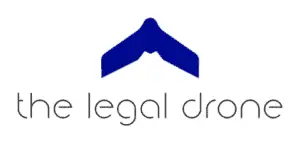The FAA has put certain rules in place (Part 107) for commercial drone pilots in order to make sure that they can fly safely in the national airspace. Certain Part 107 requirements can be temporarily waived (or different requirements authorized), which allows for more flexibility in how drone pilot can fly legally.
This article will discuss everything you need to know about Part 107 authorizations and waivers, including:
- The Part 107 rules that can be waived or authorized
- The difference between Part 107 authorizations and waivers
- How to get a Part 107 waiver or authorization
One thing that can be really confusing for a new drone pilot (or a seasoned one) is the whole idea of getting Part 107 waivers or authorizations. Do I need a waiver? Or an authorization? What is the difference between the two? How do I get one? All great questions, which we will discuss in this article.
Difference between Part 107 Authorizations and Waivers
Let’s start with Part 107 authorizations first because I think it will also help with the definition of Part 107 waivers. A Part 107 authorization allows you to fly in controlled airspace for a certain period of time. Check out our Ultimate Part 107 Exam Guide for more on what you can do under Part 107 even without a waiver or authorization.
Part 107 waivers on the other hand, are official documents “issued by the FAA, which authorize certain operations of aircraft outside the limitations of the regulation, but under conditions ensuring an equivalent level of safety.” This sounds a little less clear, but basically it means permission from the FAA to waive any of the other Part 107 regulations, aside from airspace.
Getting Part 107 Authorizations
Believe it or not, the FAA has taken great strides to make getting an authorization easier. When the authorization and waiver process first started out, it literally took months to get any response. Naturally, this was long enough that most of our clients just decided against using drones for the project to begin with. Now, Part 107 authorizations can be granted in one of two ways. First, you can obtain a Part 107 authorization using the LAANC system. Basically, the FAA has broken down controlled airspace around an airport into a series of grids and within each grid, it has decided the altitude to which someone can request airspace authorization and receive it automatically. To access the LAANC system, you will need an app like Airmap, Kittyhawk or Skyward. Like I’ve said before, I’m a big fan of Airmap but there are numerous providers of this service. Below is a video that covers the process to obtain authorization via the LAANC system on Airmap.
The FAA has rolled out the LAANC system nationwide. Unfortunately, this doesn’t mean that you can get an authorization at every airport in the United States using the LAANC system. Far from it. The thing is, not every air traffic control facility has chosen to participate in this system. So, while it is available everywhere, it could be a while before it is adopted everywhere. Here’s a link to the grid map, showing LAANC access. If the airport shows up with a green grid, you can get LAANC access, while red means it has not yet been adopted.
The FAA released a really helpful video on this process that describes Part 107 waivers and authorizations in depth. It’s an hour long but is available here if you’re interested.


